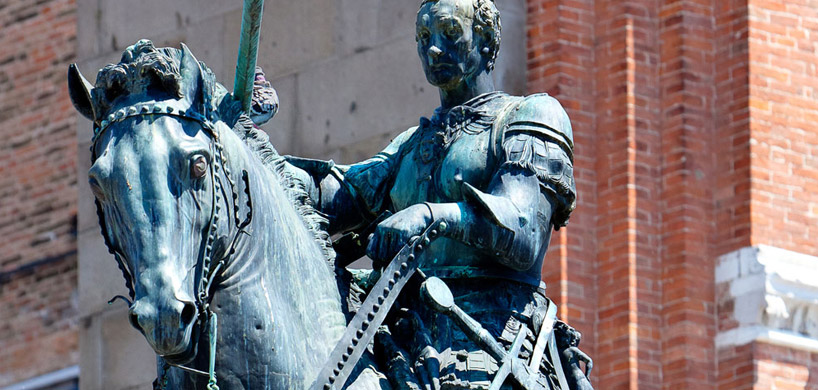Renaissance art in Italy received patronage mainly from prominent families. Some of them were the Medici, the Gonzaga, the Bentivoglio, and the Visconti. Under Pope Sixtus IV and Julius II, many great works of art were created. The revival of classical forms and subjects greatly influenced Italian Renaissance sculpture. Most of the sculpted pieces during those times were influenced by Greek and Roman sculptures.
Between the 9th and the 15th centuries, the German, Frankish, and Lombard influences were also seen. The Early Renaissance sculpture was characterized by naturalism. One can see the change from a conventional approach to a more realistic and naturalistic treatment in the sculptures.
Methods and materials used
Unlike the Gothic sculpture, the Renaissance sculpture gave lesser prominence to the use of precious metals. Bronze became a favourite metal with the Renaissance sculptors. The reasons were the metal’s ductility, durability, and brilliance. It was first employed while creating reliefs and then used for portrait busts, statues, and minor sculptures.
Despite its use, bronze casting was faced with certain problems and the early sculptures were not highly polished. This problem was overcome during the 16th century by the High Renaissance sculptors. A significant rise in demand for intricate detail in stone sculpture led to the use of marble. White Carrara marble was a popular choice when it came to sculpting monuments.
Wings of angels, ornaments of robes, hair, and similar details were gilded. A much cheaper substitute for marble came in the form of terracotta. It was used for pulpits, altarpieces, and fonts. Wooden sculptures were common mostly in the regions covered with forests.
Florentine sculpture
More naturalistic sculptures were created by the sculptors at the end of the 14th century. They were, at the time, working on the Cathedral of Florence. The naturalistic sculptures were created with a combination of classic and Christian themes. Among the top sculptors of this period were Donatello, Lorenzo Ghiberti, and Nanni di Banco.
The demand for monuments made of marble and bronze increased during the late 15th century. Sculpted altarpieces, tombs, pulpits, and statues were given to the churches. The secular places were provided with friezes, sculpted doorways, portrait busts, and reliefs.
Sienese sculpture
As different artistic traditions existed in Siena, the Gothic sculpture endured longer in this part of Italy. Among the most distinguished sculptors was Jacopo Della Quercia. His earliest works of sculpture were highly Gothic in character. Later a more classical period arrived and lastly came a more dramatic period.
The works of Lorenzo Vecchietta largely reflected the Gothic manner of Quercia. Among the other noted Sienese sculptors of this period were Giacomo Cozzarelli and Lorenzo di Mariano.
Venetian sculpture
The Venetian sculptors were more dominant in the eastern region. In Venice, there was a taste for rich decorative works. They were expected to be less banal than the ones in Milan and more sentimental than those in Florence. Renaissance art in Venice mostly appealed to pleasurable emotions.
The influence of Venetian sculptors extended to areas like Dalmatia, Verona, Istria, Cesena, and Ravenna. Some of the notable Venetian sculptors were Alessandro Leopardi, Bartolommeo Buon, and Pietro Lombardo.


